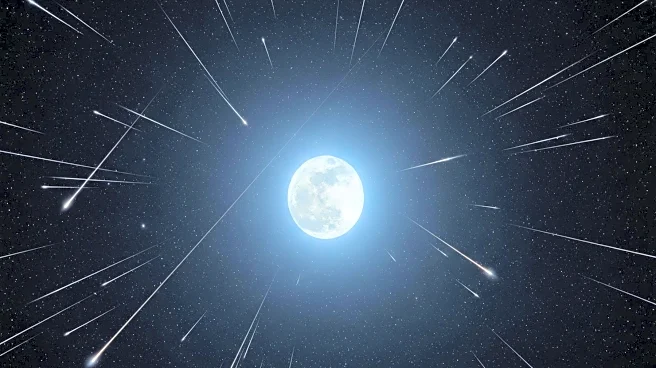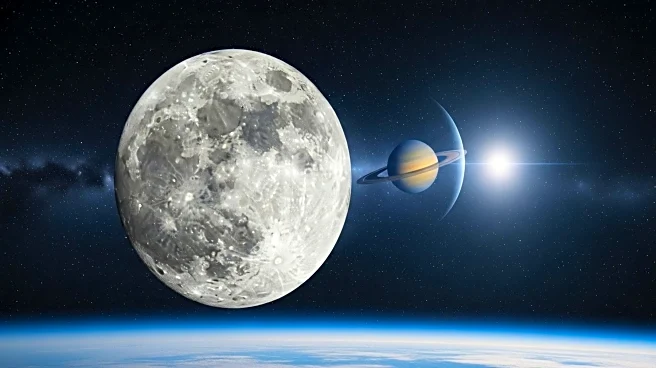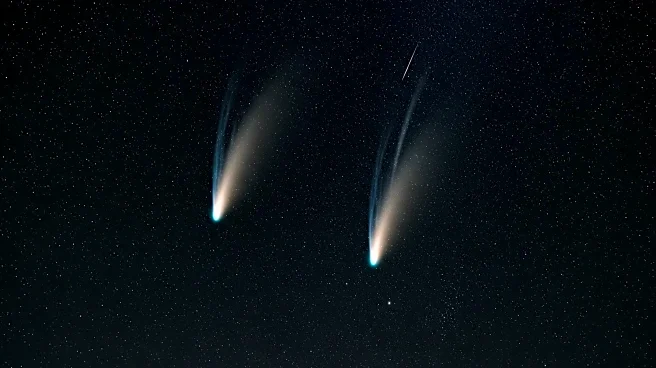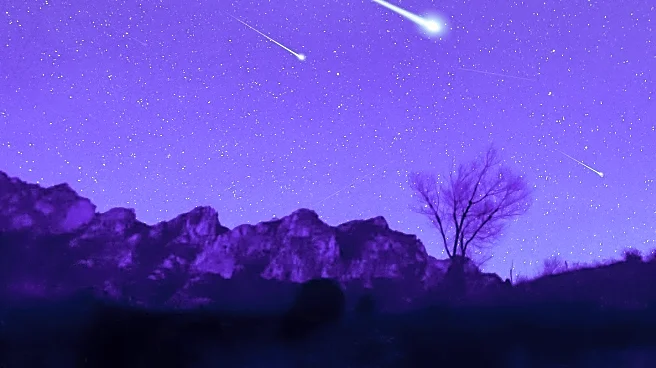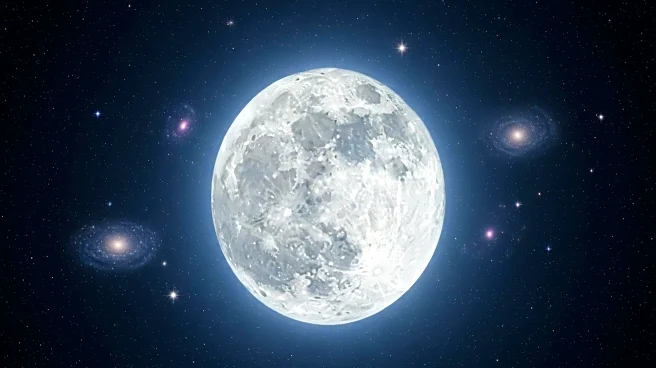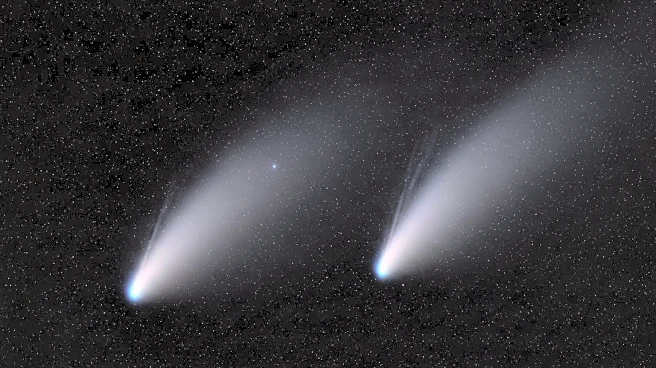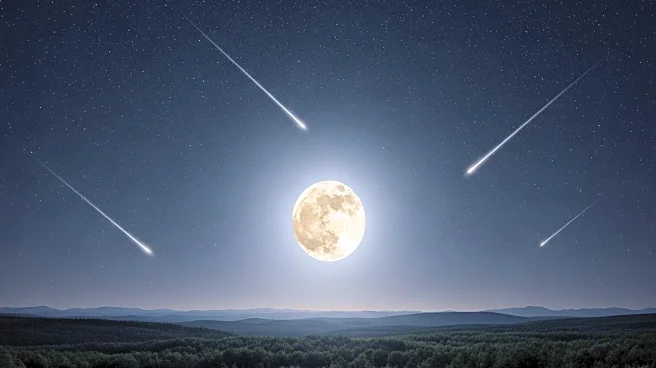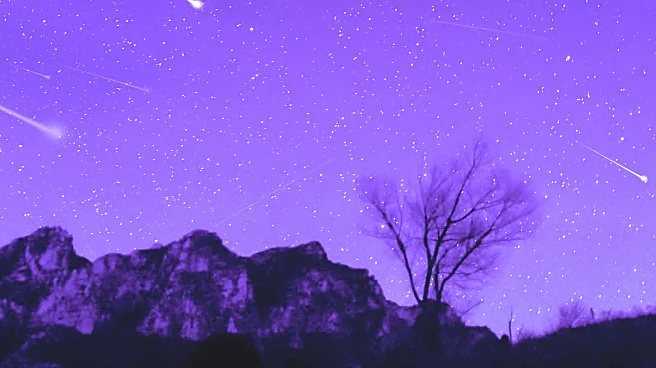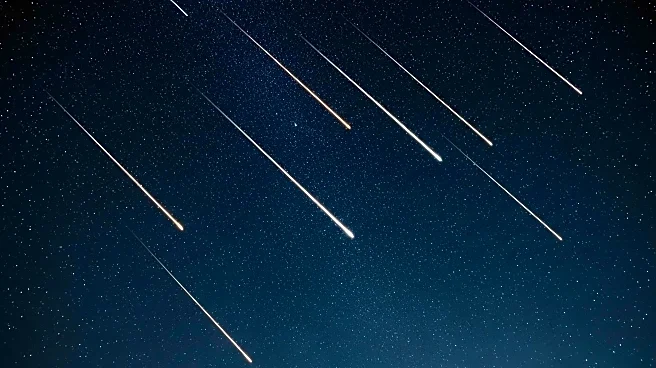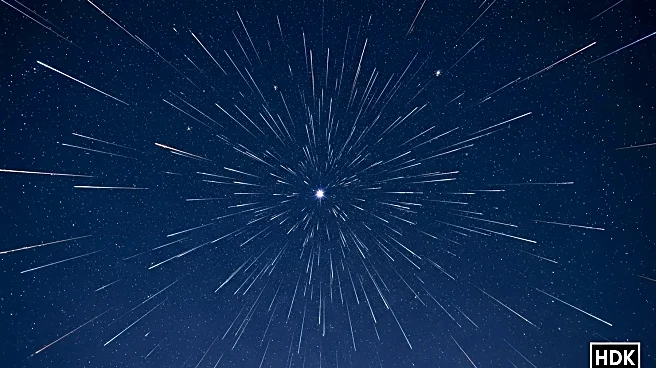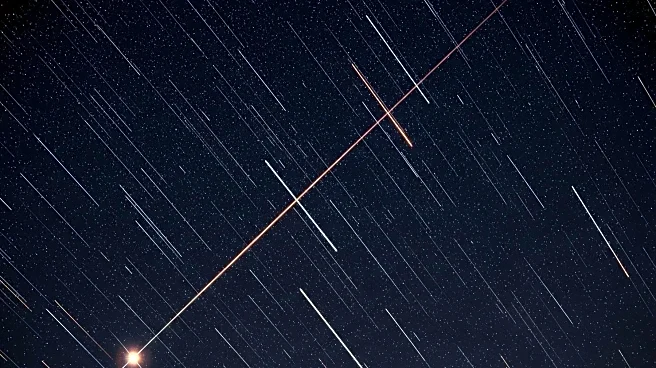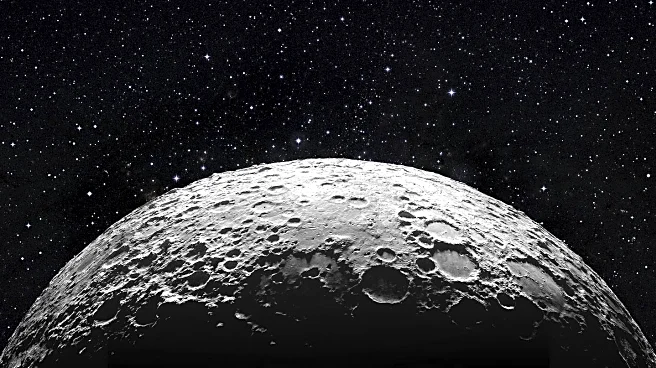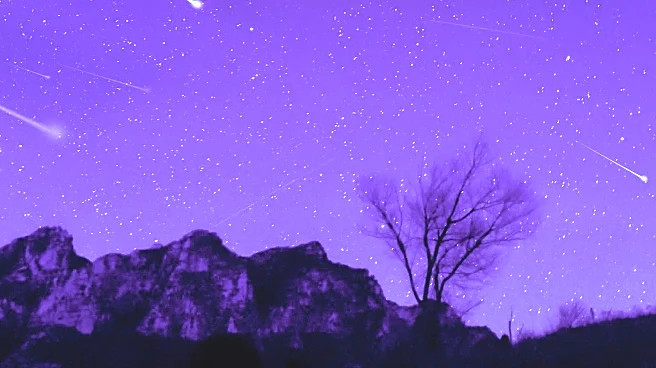What is the story about?
What's Happening?
NASA has announced that two major meteor showers, the Draconids and the Orionids, will be visible in October. The Draconids, originating from Comet 21P/Giacobini-Zinner, are expected to peak on October 8, but visibility may be reduced due to a super full moon. Observers might see up to 10 meteors per hour under ideal conditions. The Orionids, linked to Halley's Comet, will peak on October 21, offering a more promising display with up to 20 meteors per hour, including potential fireballs. Both showers are best viewed away from light pollution.
Why It's Important?
Meteor showers like the Draconids and Orionids provide opportunities for public engagement with astronomy and science. They can inspire interest in space exploration and scientific research. The visibility challenges posed by the full moon highlight the importance of understanding celestial events and their impact on observational conditions. These events can also boost local tourism in areas with dark skies, as enthusiasts travel to optimal viewing locations.
What's Next?
Observers are advised to plan their viewing away from city lights and to use apps to locate constellations. The Orionids, with their brighter meteors, may offer better viewing conditions later in the month. NASA suggests waiting for the Orionids if the Draconids are obscured by moonlight. Future meteor showers will continue to provide opportunities for skywatching and scientific study.
Beyond the Headlines
Meteor showers are not only a spectacle but also a reminder of the dynamic nature of our solar system. The debris trails left by comets like Halley's and Giacobini-Zinner offer insights into the composition and behavior of these celestial bodies. Understanding these phenomena contributes to broader knowledge of space weather and its potential impacts on Earth.
AI Generated Content
Do you find this article useful?
